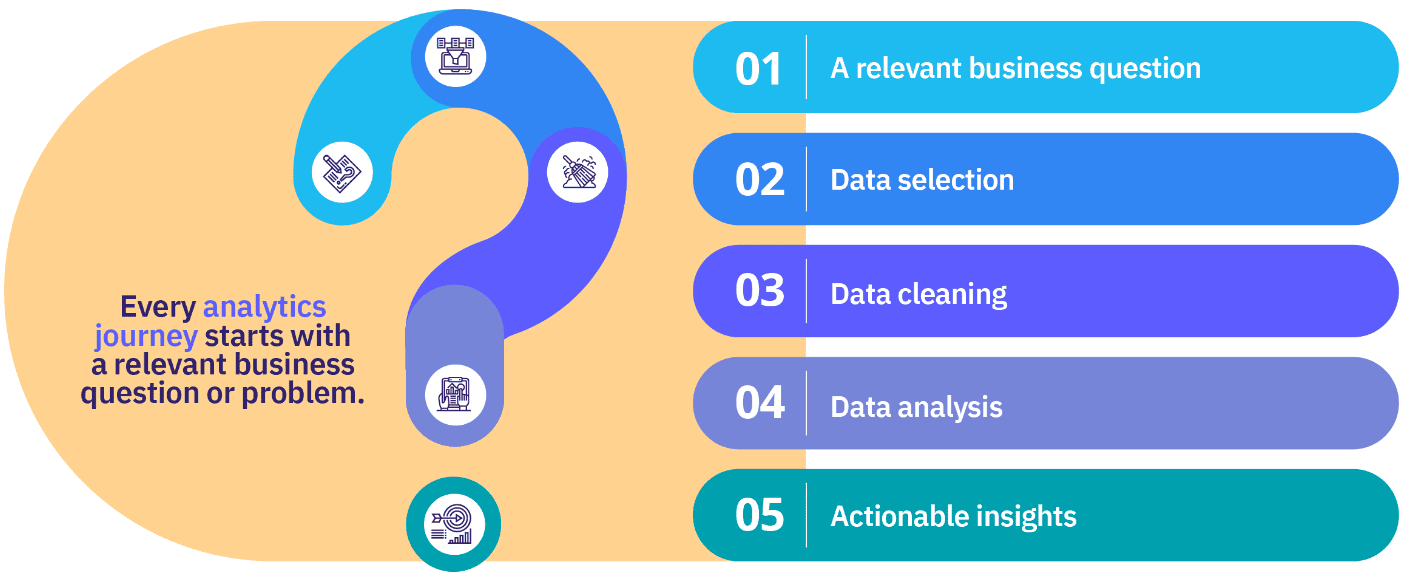Effective analytics is not just about collecting and processing data; it's about transforming data into actionable insights that drive business growth. Here's a breakdown of key processes to enhance your analytics capabilities:
Data Acquisition and Preparation
- Data Identification: Clearly define the data required to answer specific business questions.
- Data Collection: Implement efficient methods to gather data from various sources (CRM, website analytics, social media, etc.).
- Data Cleaning & Validation: Ensure data accuracy and consistency by removing errors, duplicates, and inconsistencies.
- Data Enrichment: Enhance data value by integrating additional information (e.g., demographic data, economic indicators).
- Data Transformation: Convert raw data into a suitable format for analysis (e.g., normalization, aggregation).

Data Exploration and Analysis
- Descriptive Analytics: Summarize historical data to understand patterns and trends.
- Diagnostic Analytics: Investigate the root causes of past events or outcomes.
- Predictive Analytics: Build models to forecast future trends and outcomes based on historical data.
- Prescriptive Analytics: Recommend actions based on predicted outcomes to optimize business operations.
- Data Visualization: Create clear and compelling visualizations to communicate insights to stakeholders.
Data-Driven Decision Making
- KPI Definition: Establish key performance indicators (KPIs) aligned with business objectives.
- Data-Driven Insights Generation: Extract actionable insights from data analysis to inform decision-making.
- Scenario Planning: Model different scenarios to assess potential outcomes and risks.
- Decision Support Tools: Utilize analytics tools to provide recommendations and support decision-making processes.
- Continuous Monitoring & Improvement: Track the performance of data-driven decisions and refine analytics processes over time.

Data Governance and Management
- Data Governance Framework: Establish clear policies and procedures for data ownership, access, and usage.
- Data Quality Management: Implement processes to ensure data accuracy, completeness, and consistency.
- Data Security & Privacy: Protect sensitive data from unauthorized access and comply with relevant regulations.
- Data Retention & Archiving: Define data retention policies and implement procedures for archiving historical data.
Organizational Alignment and Change Management
- Data-Driven Culture: Foster a culture where data is valued and used for decision-making at all levels.
- Analytics Skills Development: Invest in training and development programs to enhance employees' data analysis capabilities.
- Collaboration & Communication: Encourage collaboration between analytics teams and business units to ensure alignment with business goals.
- Change Management Initiatives: Implement change management strategies to overcome resistance to data-driven decision making.
Technology and Tools
- Analytics Tool Selection: Choose analytics tools that align with your business needs and budget.
- Data Integration: Integrate data from various sources into a central repository for analysis.
- Data Visualization Tools: Utilize tools to create impactful and interactive visualizations.
- Data Governance Platforms: Implement tools to manage data quality, security, and compliance.
By following these processes, organizations can effectively harness the power of data to drive business growth, improve decision-making, and gain a competitive advantage.

